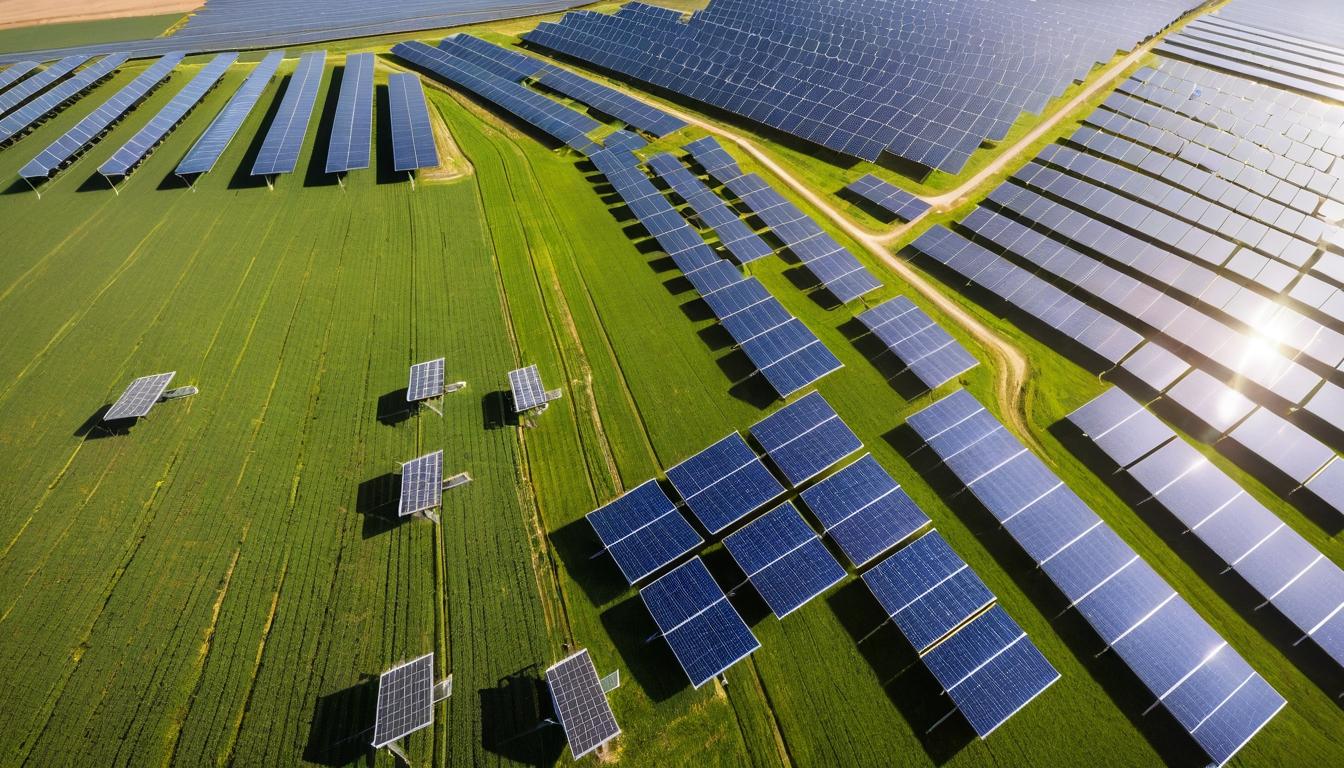While most people focus on solar panels getting cheaper and more efficient, the real transformation is happening in the shadows of the industry. From floating solar farms that double as fish habitats to solar roads that generate power while you drive, the innovation pipeline is bursting with ideas that sound like science fiction but are becoming reality faster than anyone predicted.
One of the most exciting developments comes from what industry insiders call "agrivoltaics" - the marriage of agriculture and solar energy generation. Farmers across the Midwest are discovering they can grow crops under elevated solar panels, creating a symbiotic relationship where plants benefit from partial shade while the panels stay cooler and more efficient. The results are staggering: some farms report 30% higher crop yields while generating enough electricity to power entire communities.
Meanwhile, the recycling challenge that once threatened to become solar's Achilles heel is turning into a golden opportunity. Companies are developing processes that can recover 95% of a solar panel's materials, including high-purity silicon, silver, and copper. This isn't just about sustainability - it's becoming a lucrative business model as the first generation of solar installations reaches end-of-life. The circular economy for solar is no longer a distant dream but an emerging reality.
Storage technology is undergoing its own quiet revolution. While lithium-ion batteries dominate headlines, flow batteries using iron, saltwater, and other abundant materials are making surprising gains. These systems can store energy for days rather than hours, solving the intermittency problem that has long plagued renewable energy. The breakthrough isn't just technical - it's economic, with costs dropping faster than even the most optimistic forecasts predicted.
The international solar landscape is shifting in ways that defy conventional wisdom. Countries without strong manufacturing bases are leapfrogging traditional development paths by embracing distributed solar and microgrids. In Southeast Asia and parts of Africa, solar is becoming the default energy source for new development, bypassing the fossil fuel infrastructure that once seemed inevitable. This isn't just about climate change - it's about economic empowerment and energy sovereignty.
Corporate energy procurement is creating unexpected ripple effects across global markets. When major companies commit to 100% renewable energy, they're not just buying credits - they're fundamentally reshaping energy markets. The demand for 24/7 clean energy is driving innovation in time-matching technologies and creating new revenue streams for solar developers who can deliver power when it's most needed.
The workforce transformation might be the most overlooked story in solar's ascent. What began as an industry dominated by electrical engineers and construction workers now includes data scientists, AI specialists, and financial innovators. The skills needed to drive solar forward are evolving as rapidly as the technology itself, creating opportunities in regions that missed out on previous energy booms.
Community solar projects are solving one of renewable energy's toughest challenges: accessibility. By allowing multiple households to share the benefits of a single solar array, these projects are bringing clean energy to renters, low-income families, and others who can't install rooftop systems. The model is proving so successful that some states are seeing waiting lists for community solar subscriptions that stretch for months.
The materials science behind solar continues to surprise even the experts. Perovskite solar cells, once considered laboratory curiosities, are now entering commercial production with efficiencies that challenge conventional silicon. Tandem cells combining different materials are pushing conversion rates toward theoretical limits that seemed unreachable just a few years ago. The pace of improvement suggests we're nowhere near the ceiling for solar performance.
As solar becomes ubiquitous, new questions are emerging about grid integration, land use, and social acceptance. The solutions being developed are as creative as the problems are complex. From solar canopies over parking lots to vertical bifacial panels along highways, the industry is finding ways to generate power without competing with other land uses. The future of solar isn't just about more panels - it's about smarter integration into our built environment.
What's clear from tracking these developments is that the solar revolution is entering its most interesting phase. The low-hanging fruit has been picked, and now the real work begins. The companies and countries that succeed will be those that understand solar isn't just an energy source - it's a platform for innovation that touches every aspect of our economy and society.
The solar revolution is accelerating - here's what's happening beyond the headlines




